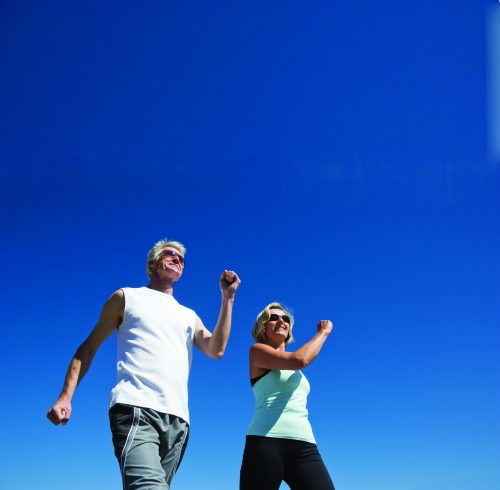
One in two NZ women and one in three NZ men over 65 will have an osteoporotic fracture. But you don’t have to become another statistic, says nutritionist Caitlin Reid.
Every six minutes, another New Zealander suffers an osteoporotic fracture. Worse still, by 2020 this amount is expected to increase to one incident every four-and-a-half minutes. And once you’ve had an osteoporotic fracture, your risk of having another increases. In fact, roughly 50% of fracture sufferers have a second one, with fracture risk increasing again with every subsequent fracture. This ‘fracture cascade’, as it’s called, can result in serious pain, deformity, disability, and even premature death. But for many people, osteoporotic fracture can be prevented or at least, the risk of fracture reduced.
What is osteoporosis?
Osteoporosis is a disease in which bones become fragile and more likely to break. It is characterised by reduced bone density and quality, which causes bones to weaken and increases fracture risk.
Often referred to as the ‘silent thief’, osteoporosis can progress without any symptoms until a bone breaks. The hip, humerus (upper arm), spine, ribs or wrist are among common fracture sites, although a fracture can occur anywhere. Hip fractures impair a person’s ability to walk, while spinal fractures have serious consequences, including loss of height, severe back pain and deformity.
Why do we get it?
It’s easy to think of bone as solid and lifeless, but it’s actually a living tissue, constantly being renewed. Throughout life, old bone is lost and removed by cells called osteoclasts, while new bone is built by osteoblasts; a process of removal and formation which is usually balanced, maintaining skeletal strength.
However, once we’ve reached a stage of bone development called peak bone mass (when our bones are strongest), our bone strength very slowly begins to decline. It’s this peak bone mass, and the resulting rate of bone loss, which are the major determinants of osteoporosis development.
Peak bone mass occurs in our early 20s, so childhood and teenage years are critical times for bone growth and development. Our potential peak bone mass is genetically determined, but other factors – such as calcium and vitamin D intake, physical activity levels, hormonal status and lifestyle factors such as smoking and alcohol consumption – influence what we actually end up with.
Are you at risk? Take this quiz
What you CAN’T change – your family history
1. Have either of your parents been diagnosed with osteoporosis or broken a bone after a minor fall?
2. Did either of your parents have a ‘dowager’s hump’?
Our personal clinical factors
These are fixed risk factors that one is born with or cannot alter. It is important to be aware of fixed risks so that steps can be taken to reduce loss of bone mineral.
3. Are you 40 years old or older?
4. Have you ever broken a bone after a minor fall as an adult?
5. Do you fall frequently (more than once in the last year) or do you have a fear of falling because you are frail?
6. After the age of 40, have you lost more than 3cm in height?
7. Are you underweight (is your Body Mass Index less than 19)?
8. Have you ever taken corticosteroid tablets (cortisone, prednisone etc.) for more than three consecutive months?
9. Have you ever been diagnosed with rheumatoid arthritis?
10. Have you been diagnosed with an over-reactive thyroid or over-reactive parathyroid glands?
Questions 11-13 for women
11. For women over 45, did your menopause occur before the age of 45?
12. Have your periods ever stopped for 12 consecutive months or more (other than because of pregnancy, menopause or hysterectomy)?
13. Were your ovaries removed before age 50, without you taking Hormone Replacement Therapy?
Question 14 for men
14. Have you ever suffered from impotence, lack of libido or other symptoms related to low testosterone levels?
What you CAN change – your lifestyle factors
15. Do you regularly drink alcohol in excess of safe drinking limits (more than two units a day)?
16. Do you currently, or have you ever, smoked cigarettes?
17. Is your daily level of physical activity less than 30 minutes per day (housework, gardening, walking, running etc)?
18. Do you avoid, or are you allergic to milk or dairy products, without taking any calcium supplements?
19. Do you spend less than 10 minutes per day outdoors (with part of your body exposed to sunlight), without taking vitamin D supplements?
Understanding your answers
If you answered ‘yes’ to any of these questions, it does not mean that you have osteoporosis. Positive answers simply mean that you have clinically-proven risk factors which may lead to osteoporosis and fractures.
Test courtesy of Osteoporosis New Zealand and the International Osteoporosis Foundation. For more information see and www.iofbonehealth.org.
www.healthyfood.com










